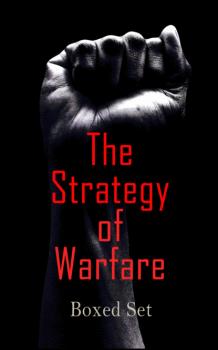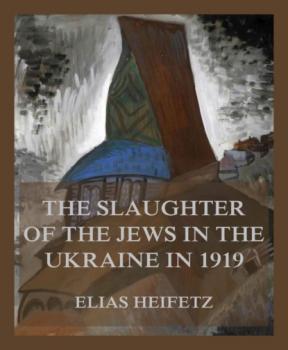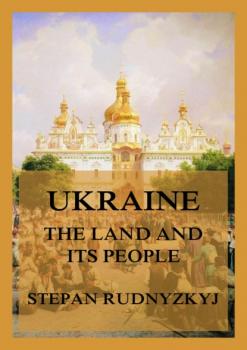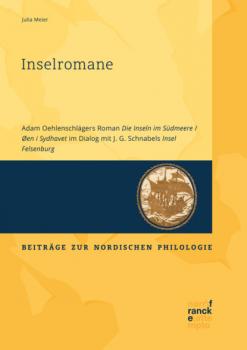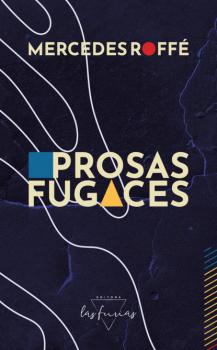ТОП просматриваемых книг сайта:
Документальная литература
Различные книги в жанре Документальная литература, доступные для чтения и скачиванияАннотация
E-artnow presents to you this meticulously edited collection of the greatest military strategy books in history: On War (Carl von Clausewitz) Maxims of War (Napoleon Bonaparte) Battle Studies (Ardant du Picq) Guerrilla Warfare (Ernesto Che Guevara) The Book of War (Wu Qi) The Art of War (Sun Tzu) The Analects: The Book of Leadership (Confucius) Arthashastra: The Ancient Indian Book on Wisdom and Strategy (Kautilya) Strategemata: The Manual of Military Tactics (Sextus Julius Frontinus) De re military: Organization of the Roman Army and Battle Tactics (Publius Vegetius Renatus) The Art of War (Niccolò Machiavelli) Small Wars Manual: The Strategy of Military Operations (US Marine Corps)
Аннотация
Although not known and recognized during his lifetime, this book has earned Ardant du Picq a place in the ranks of great military theorists. Du Picq's work attempts to deal with the principles of warfare as an empirical study, based on case studies of battles, most influential ancient battles and modern warfare. Battle Studies became a key textbook in the French Army's École de Guerre His analyses stressed the vital importance, especially in contemporary warfare, of discipline and unit cohesion. The theme of the book is that «moral force» is the most powerful element in the strength of armies and the preponderating influence in the outcome of battles. In general form, he states: The goal of the army Combat is the object, the cause of being, and the supreme manifestation of an army. Every measure that does not keep combat as the object of the army is fatal. All the resources accumulated in time of peace, all the training, and all the strategic calculations must have the goal of combat. Man in combat The human element is more important than theories. War is still more of an art than a science. One popular quote demonstrating this conclusion drawn from numerous battle studies states, «Nothing can wisely be prescribed in any army… without exact knowledge of the fundamental instrument, man, and his state of mind, his morale, at the instant of combat.» Great strategists and leaders of men are marked by inspiration. «Generals of genius draw from the human heart ability to execute a surprising variety of movements which vary the routine; the mediocre ones, who have no eyes to read readily, are doomed to the worst errors.»
Информация о книге
Автор произведения Charles-Jean-Jacques-Joseph Ardant du Picq
Аннотация
Аннотация
The Ukrainian pogroms of 1919 constitute a striking exhibition of mass savagery. Approximately 120,000 men, women and children were killed; whole villages were wiped out; the entire Jewish population of southern Russia was reduced to the brink of complete destruction. But Dr. Heifetz is not content merely to set down a tale of horrors. He seeks to analyze the social and psychological factors which lie behind this explosion of wholesale murder. He discovers three separate sets of motives, which hold good for the three classes of pogroms, those committed by Denikin, those committed by Petlura, and those committed by the Ukrainian guerilla leaders. The political viewpoint of General Denikin, widely hailed in western Europe and America as a champion of democracy against Bolshevik tyranny, was very simple. He believed that all the troubles of Russia should be ascribed to the overthrow of the Tsar, which, in his opinion, was brought about by the intrigues of Jews and professional revolutionists. His remedy was correspondingly simple. Kill off as many Jews and revolutionists as possible. Then the peasants would gladly surrender their land ; the workers would hasten to give up their factories; all classes again be well with Holy Russia. Something miscarried in Denikin's calculations: for the Red Army routed his Cossacks near Orel; and his defeat was completed by tumultuary uprisings of the Ukrainian peasants in his rear. But, before he was obliged to seek a hospitable refuge in England, he enjoyed the satisfaction of killing about 50,000 Jews. Dr. Heifetz adduces many eye witness reports of pogroms committed by Denikin's troops, together with specimens of the violently anti-Semitic literature distributed by order of his propaganda department. The case of the Ukrainian nationalist leader, Petlura, is somewhat different. Petlura claimed to be a Socialist; and he can scarcely have regarded pogroms as a necessary part of his political and economic policy. But he was unable to resist the temptation to make political capital by denouncing «the Jews at Moscow» and to attract the ruffianly elements to his side by offering prospects of unlimited looting. The protestations of Petlura's apologists that he actively opposed anti- Jewish outrages are effectively invalidated by the number of massacres unquestionably committed by his troops, by his appointment of a notorious organizer of pogroms, Colonel Petrov, to the post of Minister of War, and by the fact that he was present at a pogrom in Zhitomir without making any effort to stop it. Such bandit leaders as Makhno and Grigoriev may be considered, in a very crude and direct sense, representatives of the economic desires and interests of the Ukrainian peasants. These peasants were very good Bolsheviki, so far as driving out the landlords was concerned. But, having gained possession of the land, they resented and opposed the existence of any strong central government, whether communist or monarchist. What they wanted was complete freedom of their manufactured goods, and incidentally, to murder the Jews. Of all the contending factions the Soviet government alone consistently and vigorously repressed every anti- Jewish manifestation in the territory under its control. Dr. Heifetz gives many instances of the humanity and discipline of the Red troops. Whenever the Soviet forces were compelled to retreat even the Jewish bourgeoisie fled with them for protection.
Аннотация
In fact, before the Russian aggression in 2022, the name Ukraine meant nothing at all to many of us. To dispel this ignorance concerning «the second largest Slavic nation,» this little book was already written in 1910 by the famous geographer of the University of Lemberg. He divides his discussion into two sections: the first a treatise on the physical geography of Ukraine, describing its geographic unity, its general topography, and giving detailed information concerning its streams, climate. flora, and fauna; the second, concerned with the Ukraine's anthropogeography, a clear and concise exposition of those national qualities which entitle the Ukrainians to an independent national existence. Such foundations for national independence are, in the words of the author, «independent anthropological characteristics: a distinct independent language; uniform historico-political traditions an aspirations, and independent culture, and a compact geographical territory.» A general survey of the natural and industrial resources of Ukrainia, and a description of her districts and settlements conclude the discussion.
Аннотация
Rasputin and the Russian Revolution is an exciting look at the personality of Rasputin by a contemporary observer of the last days of the Romanov monarchy and the revolution. Princess Radziwill was an intimate of royals and witnessed Rasputin's deeds. She was one of few people surviving the revolution who could share the intimate details of the royal family's lives and the role of Rasputin in the upcoming political turmoil. Radziwill accuses Nicholas II and Empress Alexandra of too much fascination with Rasputin, which negatively affected further country development.
Аннотация
Mit seinem zweisprachigen Roman gestaltete Oehlenschläger auf der Basis von Schnabels Insel Felsenburg ein völlig neues Werk. Durch die Fülle von Reflexionen, Prätexten, Zitaten, lyrischen Einlagen, Novellen sowie dem Einbezug von Schnabels zentralen Strukturen und Hauptfiguren entstand ein vielschichtiger und dynamischer Text, der aber bisher beim Lesepublikum und in der Forschung nur wenig Beachtung gefunden hat. Die vorliegende Untersuchung beleuchtet anhand von Bachtins und Kristevas Polyphonie- und Intertextualitätstheorien die Mehrstimmigkeit und Vielfalt des Romans, wobei die Zweisprachigkeit ebenso einbezogen wird wie die verschiedenen Fassungen, die von der Erstausgabe teilweise stark abweichen. Detaillierte Analysen zeigen, dass der Roman zu seiner Zeit neuartige literarische Verfahren für die Textproduktion fruchtbar machte.
Аннотация
Estas Prosas fugaces, de Mercedes Roffé, son como bengalas que además de deslumbrar también alumbran, a secas, el mejor camino en la noche. «Podemos seguir usando todas las metáforas que queramos, a condición de no perder de vista lo que el vehículo significa y que el vehículo transporta ideología». La voz reflexiva, la voz crítica de Roffé abarca y expone misterios y evidencias de la tarea del poeta, del artista, del creador y de la materia del poema. De Tarkowski a Novalis, de Cixous a Pizarnik o Michaux, consigna pasajes donde encuentra «aquello que años atrás daba en llamar ecos», y percibe y escribe sus resonancias. Así como ya no abundan en el Río de la Plata los narradores que escriban –y lean– versos, tampoco abundan los poetas que escriban ensayo. Ecología de guerra: zona de especies en extinción. La mística de la literatura solo puede nutrirse de la excepción, lo contradictorio y lo impensado. Prosas fugaces es un libro plácido, elegante y sin concesiones.
Mehrsprachigkeit im Kontext des Kurmancî-Kurdischen und des Deutschen - Yasar Kirgiz
Language DevelopmentАннотация
Das vorliegende Werk stellt sich anhand einer longitudinal angelegten Fallstudie einem Forschungsdesiderat: der mehrsprachigen Erwerbskonstellation Kurmancî-Kurdisch und Deutsch. Über einen Zeitraum von etwa acht Monaten werden die Sprachentwicklung und Sprachkompetenz von sechs Kindern im Vorschulalter in Kurmancî-Kurdisch und in Deutsch mit diversen Instrumenten erfasst und analysiert, wobei auch die weiteren Sprachen der Studienkinder sorgfältig herausgearbeitet und im Zusammenhang mit ihren ersten beiden Sprachen erläutert werden. Die Studie setzt sich auch mit dem Einfluss der Familiensprachpraxis auf die Sprachentwicklung und Sprachkompetenz auseinander. In diesem Zusammenhang wird außerdem die Rolle der bislang einmaligen bilingualen kurdisch-deutschen Kindertagesstätte Pîya mit in die Analyse eingeschlossen. Entsprechend vielfältig und vielsichtig sind die Ergebnisse dieser Studie.
Информация о книге
Автор произведения Yasar Kirgiz
Жанр Документальная литература
Серия Language Development

